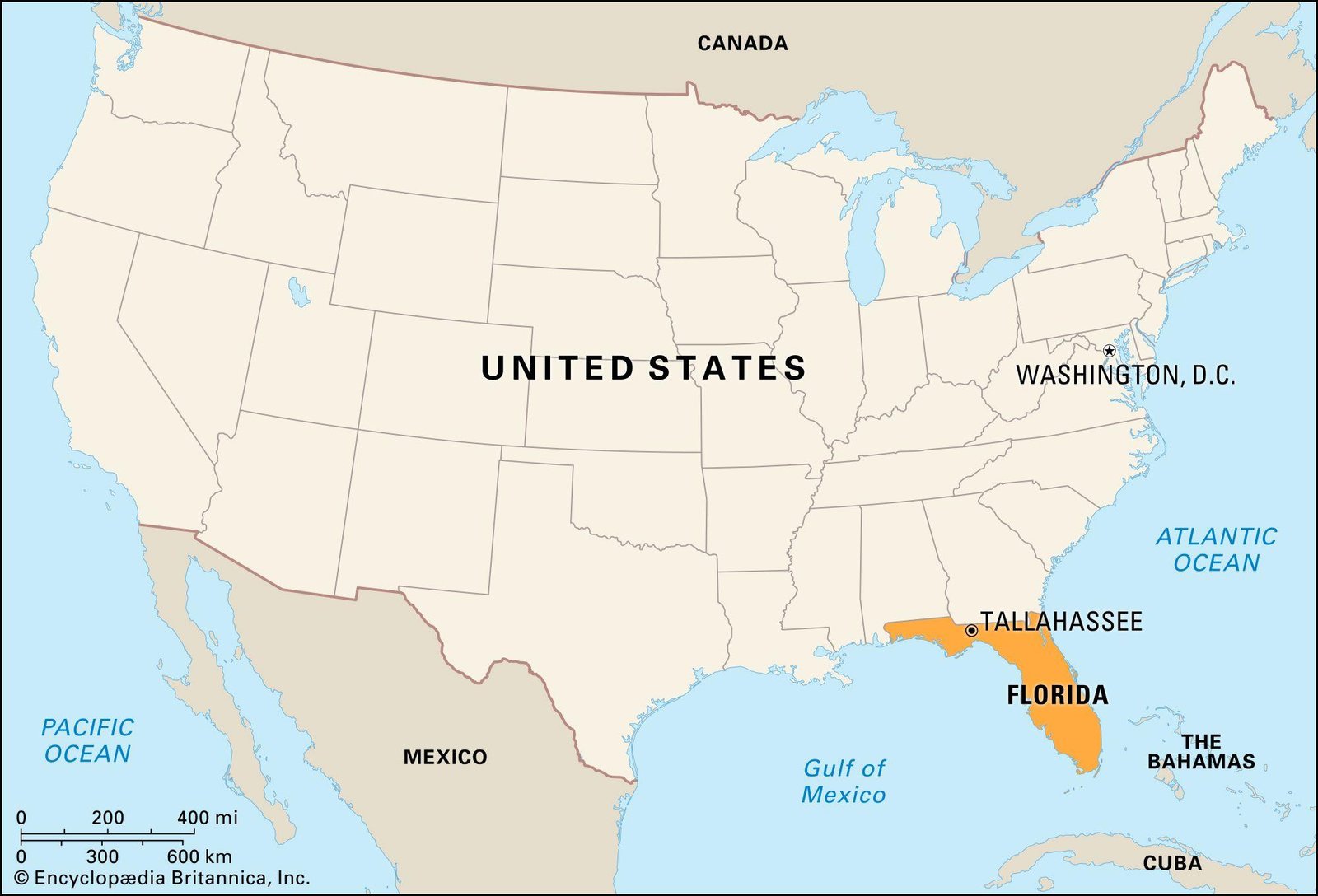In the ever-evolving landscape of the American job market, Florida has managed to carve out a remarkable narrative over the past three-and-a-half years. With its sun-soaked beaches and vibrant tourism industry, the Sunshine State has not only become a haven for vacationers but has also established itself as a beacon of employment stability. For 45 consecutive months, Florida’s unemployment rate has held steadfast below the national average, a testament to its resilient economy and dynamic workforce. As we delve into the latest jobs report, we unravel the factors contributing to this impressive streak, exploring the implications for both the state’s residents and the broader economic picture. Join us as we examine the data, trends, and stories that illuminate Florida’s journey toward sustained job growth in an ever-competitive national landscape.
Taking a Closer Look at Floridas Sustained Employment Success
Florida’s job market has displayed a remarkable resilience, maintaining an unemployment rate below the national average for an astonishing 45 consecutive months. This sustained success can be attributed to several key factors that collectively bolster the state’s economy. Investments in Infrastructure, Diverse Industry Growth, and Skilled Workforce Development stand out as crucial elements driving this trend. Florida’s commitment to enhancing its transportation and technology infrastructure has attracted businesses and talent alike, ensuring that the state remains an appealing destination for both employers and job seekers.
Additionally, the state’s favorable climate for entrepreneurship has allowed a variety of sectors to thrive, particularly in tourism, healthcare, and technology. Strategic initiatives aimed at fostering innovation and supporting small businesses have further strengthened the economy. Through targeted workforce training programs, Florida continues to invest in its human capital, preparing workers for the demands of a rapidly evolving job landscape. The combination of these efforts not only contributes to a lower unemployment rate but also creates a more robust and adaptable labor force.
| Key Factors for Employment Success | Description |
|---|---|
| Investments in Infrastructure | Enhancements in transportation and tech attract businesses. |
| Diverse Industry Growth | Multiple sectors like healthcare and tourism thrive. |
| Skilled Workforce Development | Training programs prepare workers for evolving job markets. |

Factors Contributing to Floridas Lower Unemployment Rate
Florida’s consistent lower unemployment rate can be attributed to several key factors that have shaped its economic landscape over the past few years. The state has seen significant growth in sectors such as tourism, healthcare, and technology, which have created a diverse range of job opportunities. Notably, the booming tourism industry, which draws millions of visitors annually, fuels a multitude of jobs in hospitality, retail, and transportation. Additionally, Florida’s favorable business climate, characterized by a lack of state income tax and various incentives for businesses, attracts new companies and encourages existing ones to expand, further bolstering employment rates.
Moreover, the state’s strategic investments in education and workforce development have played a crucial role in reducing unemployment. Programs aimed at upskilling workers and providing vocational training ensure that the workforce is equipped to meet the demands of evolving industries. These initiatives include:
- Partnerships with local colleges to offer job-specific training.
- Incentives for businesses that prioritize hiring locally.
- Access to resources for job seekers, enhancing their employability.
As a result of these efforts, Florida not only maintains a healthy job market but also fosters resilience against economic downturns, making it an attractive destination for workers and businesses alike.

Challenges Ahead: Addressing Workforce Gaps and Skills Mismatches
As Florida continues to enjoy a remarkably low unemployment rate, it faces the pressing challenge of aligning the skills of its workforce with the demands of a rapidly evolving job market. The divergence in required skills has resulted in significant gaps that threaten to undermine the state’s economic momentum. Employers in sectors such as technology, healthcare, and advanced manufacturing are reporting difficulties in finding candidates equipped with the necessary qualifications. Some of the primary reasons for these gaps include:
- Rapid Technological Advancements: New tools and processes require continuous skill updates.
- Educational Disparities: A mismatch between what educational institutions provide and what employers demand.
- Geographical Challenges: Certain regions may have a surplus of talent while others face shortages.
To tackle these issues effectively, collaboration between businesses, educational institutions, and government entities is essential. Innovative workforce development programs can help bridge the existing skill gaps by focusing on upskilling and reskilling initiatives that prepare workers for in-demand roles. A holistic approach may include:
| Strategy | Description |
|---|---|
| Industry Partnerships | Collaborations between businesses and educational institutions to create tailored training programs. |
| Apprenticeships | Hands-on learning opportunities that engage employees while they study. |
| Online Learning | Flexible courses that allow professionals to enhance their skills at their own pace. |

Strategies for Continued Economic Growth and Job Creation in Florida
To sustain the impressive streak of lower unemployment rates in Florida, it is essential to adopt multifaceted strategies that foster economic growth and job creation. One approach is to enhance investment in infrastructure development, particularly in transportation and utilities, which can stimulate local economies and attract new businesses. Promoting education and vocational training programs will also play a critical role, ensuring that the workforce is equipped with the skills necessary for the jobs of the future.
Additionally, Florida should leverage its vibrant tourism sector by investing in sustainable tourism initiatives that not only promote the state’s attractions but also protect its natural resources. Encouraging startups and entrepreneurs through financial incentives and supportive regulations can diversify the economy, creating new job opportunities. fostering partnerships between public and private sectors can result in innovative solutions and investments that keep Florida competitive on both national and global scales.
Q&A
Q&A on Florida’s Unemployment Rate: A Steady Path of Recovery
Q1: What recent trend has been observed in Florida’s unemployment rate?
A1: Florida’s unemployment rate has remained lower than the national average for an impressive 45 consecutive months. This consistent performance highlights the state’s steady economic recovery and job growth amidst fluctuating national trends.
Q2: How does Florida’s current unemployment rate compare to the national average?
A2: As of the latest jobs report, Florida’s unemployment rate stands significantly below the national rate, showcasing the state’s resilience in creating employment opportunities and fostering a robust job market.
Q3: What factors might contribute to Florida’s lower unemployment rate?
A3: Several factors contribute to Florida’s favorable unemployment status, including a diverse economy bolstered by tourism, agriculture, and technology sectors. Additionally, proactive workforce development programs and an influx of businesses relocating to the state have played crucial roles in job creation.
Q4: What industries in Florida are currently thriving and helping to maintain low unemployment?
A4: Florida’s thriving industries include tourism, healthcare, technology, and construction. With continual investment and growth within these sectors, the state has successfully absorbed a significant number of job seekers into the workforce.
Q5: How do residents perceive the job market in Florida?
A5: Many Florida residents express optimism about the job market, citing increased job availability and opportunities for career advancement. However, some still voice concerns regarding wage stagnation and the cost of living, which can impact overall job satisfaction.
Q6: What challenges does Florida face despite its low unemployment rate?
A6: While Florida enjoys low unemployment, challenges remain, including addressing income inequality, ensuring adequate housing affordability, and preparing for fluctuations in tourism and other seasonal industries. Balancing growth while maintaining quality jobs for all demographics is crucial.
Q7: What does the future hold for employment in Florida?
A7: The future appears positive for Florida’s job market, with ongoing investments in infrastructure and education aimed at enhancing workforce skills. As industries continue to evolve, strategic planning and adaptability will be essential in sustaining employment growth.
Q8: What can other states learn from Florida’s employment journey?
A8: Other states may look to Florida’s emphasis on economic diversification, workforce training programs, and a favorable business climate as potential models for enhancing their own job markets. Adapting these strategies could help other regions navigate economic challenges and drive down unemployment rates.
Q9: Where can readers find ongoing updates about Florida’s job market?
A9: Readers can stay informed about Florida’s job market by following reports from the Florida Department of Economic Opportunity, local news outlets, and economic research institutions that frequently analyze labor trends and employment statistics.
In Summary
As we conclude our exploration of Florida’s remarkable journey through employment stability, it’s worth reflecting on the broader implications of a consistently lower unemployment rate compared to the national average. For 45 consecutive months, Florida has not only navigated the turbulent economic waters but has also set a benchmark for other states to aspire to. While the statistics paint a promising picture, they also remind us of the ongoing challenges many workers face, including underemployment and job quality.
As we move forward, it will be essential to keep our sights on sustainable growth, equitable employment opportunities, and robust workforce development strategies. The future of Florida’s job market will depend on adaptability and innovation, ensuring that as the economy evolves, no one is left behind. In this ever-changing landscape, continued vigilance and proactive measures will be key to maintaining this positive trajectory. After all, a thriving workforce is not just a statistic; it is the heartbeat of a vibrant economy. Let’s continue to watch this space, as the next chapter in Florida’s employment story unfolds.
